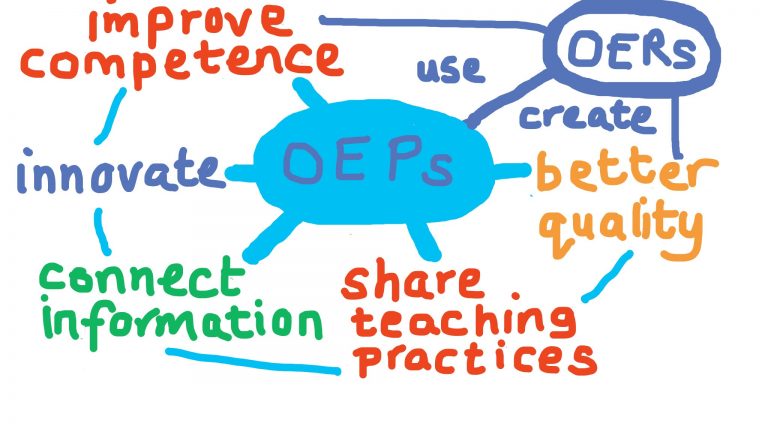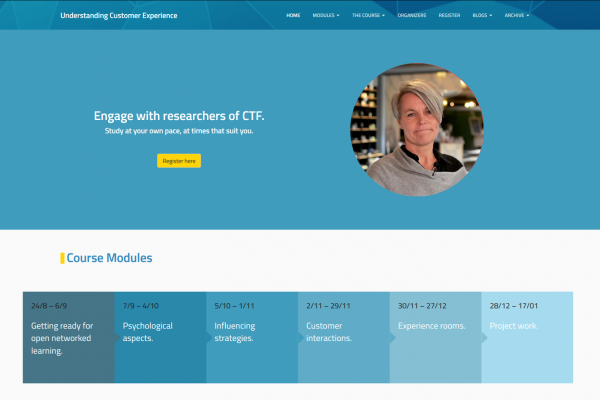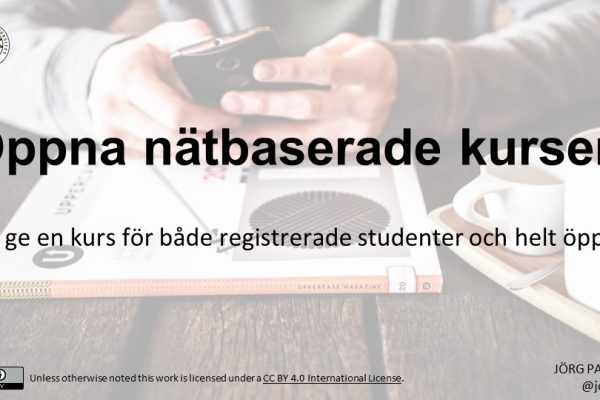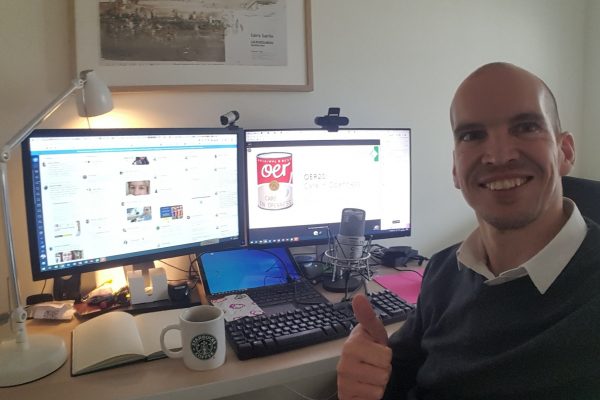In the following text I will argue how the Swedish Association of University Teachers and Researchers (the teachers’ union in the contex of higher education in Sweden) is a critical stakeholder for the proliferation of OEPs in Sweden. By doing so, I will explain the primary context in which I am interested in Creative Commons, describe the values and practices I see as most relevant in my context and will describe current challenges I face in my institution, and how I might address it, an assignment of the Creative Commons Certificate course I am enrolled in at the moment.
I am an Assistant Professor in Business Administration and researcher at CTF, Service Research Center at Karlstad University, Sweden. My research interests are customer behavior and customer experience. More specifically, I focus on the active role that the customer has as a co-creator of the customer experience and the role of the physical service environment.
I am also very involved in teaching at the Karlstad Business School, where I am program manager of the International Business (180 ECTS) program. In addition, I lead the externally funded WISR16 and WISR17 course development projects. The purpose of the projects is to develop open online graduate courses for professionals in the private and public sector based on strategically important research centres at Karlstad University, where I am also working as educational developer. In all of the above roles and tasks, in particular in the latter two, a sound knowledge of the Creative Commons licenses and copyright is key.
There are arguably at least three fundamental values and practices that are most relevant to Creative Commons licensing in that context, scientific rigour, communicating/sharing, as part of the research process, and teaching. Rigor is many things and has been described as the essence of scientific work (Allende, 2004). It is being accurate, committed to procedures and relates to all stages of the research process. The last stage of that process is communication. Here, researchers want to share their results. While building on previous research, researchers also include ‘bibliographical references’ to these works – accurate statements on where to find a particular work and giving credit to the authors. Coming to the third fundamental practice in my context, teaching, it can be argued that sharing is key. Sharing knowledge, resources and activities with students and colleagues is vital in educational contexts.
A challenge which I currently face, not only in my institution but in the country as a whole, is the attitude of the Swedish Association of University Teachers and Researchers, SULF, regarding sharing teaching resources. In Sweden, the copyright of works produces by teachers and researchers belongs to the individual not the institution. This so called lärarundantag (literally translated “teacher exception”) is an exception to regular copyright regulations between employer and employee. It is a custom or practice, not regulated by law, and includes both educational and research material. With 21 000 members and local association at all Universities and Universities of Applied Science, the union is well established and a strong stakeholder in the Swedish higher educational sector. SULF focuses for natural reasons on the relations between employer and employee also in the context of copyright and reuse of works. The problem is, as I see it, that the union argues that reuse could lead to detrimental teaching quality, a common misunderstanding when it comes to open educational resources (OERs). With the current focus and the “fear” of reuse by the institution, the union misses and undermines the sharing culture between faculty. The union’s FAQ regarding copyright might serve as a proxy for the above argument. In the last of the 19 frequently asked questions Creative Commons licenses are mentioned and reads like this (google translate translation):
“Creative Commons is a private, independent and co-financed organization that claims to be non-profit and strives to ensure that copyright holders easily obtain, through their licenses, a tool that allows the copyright holder to appear and distribute and share their material without having to give up all the rights that copyright entails. The CC licenses are of four main types where the copyright holder permits the use of a copyrighted material to varying degrees and for different purposes depending on which license they choose. If you are considering using a CC license, first carefully consider the terms of the license.”
Without highlighting any major positive argument of sharing educational resources amongst teachers and using wording such as “claims to be” a negative attitude is communicated.
One of the potential ways to address this challenge is to educate the union about the potential of OERs for student learning as well as the work situations of teachers. Swedish University teachers as well as SULF often highlight and criticise the limited hours and status for teaching. A view which I highly sympathise with. What is missed is that the reuse of OERs enables teachers to focus their limited time on designing fruitful learning activities and course design instead of creating and reinventing already existing powerpoint slides, instructional videos and other educational material. Creative Commons licenses are the fundamental building block in this endeavour.
Allende, J. (2004). Rigor – The essence of scientific work. Electronic Journal Of Biotechnology, 7(1). Retrieved March 16, 2019, from http://www.ejbiotechnology.cl/index.php/ejbiotechnology/article/view/1112/1494
“Open Educational Practices” by oeps.scotland is licensed under CC BY





